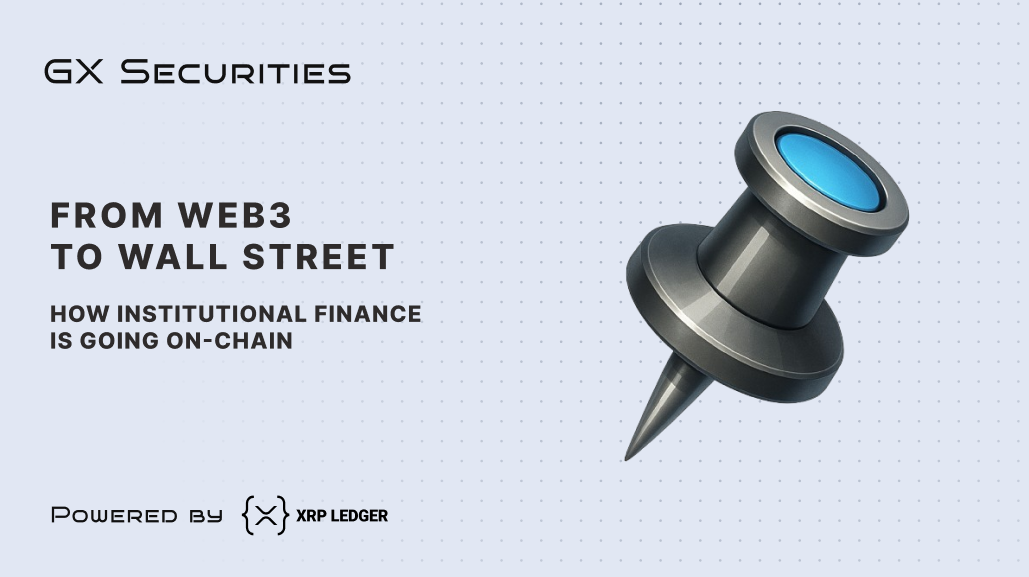
Blockchain has been circling finance for over a decade, mostly making noise in the retail and crypto-native spaces. But recently, the conversation has changed. Institutional finance is no longer just observing from the sidelines. It's stepping in with purpose.
What’s emerging isn’t a flirtation with digital assets, but a deeper shift toward on-chain finance (OnFi), a new framework where assets, rules and transactions live directly on blockchain infrastructure. This is less about hype and more about unlocking structural advantages that legacy systems have struggled to deliver.
This shift isn’t driven by trend cycles or headlines. It’s about tangible value in efficiency, transparency and asset reach. Here’s what’s pulling capital on-chain:
Hard-to-trade assets like real estate, infrastructure, or private equity can now be fractionalized into digital tokens, giving institutions a way to offer or access these assets with unprecedented flexibility. The result? Broader participation and improved capital efficiency.
On-chain systems offer real-time auditability, programmable settlemen, and less friction. Processes that once took days clearing, settlement, asset servicing—can now be handled by smart contracts in seconds, with fewer intermediaries and greater visibility.
Institutional players are beginning to explore DeFi-like protocols tailored for compliance and scale. These platforms create opportunities to structure innovative fixed income, yield, or fund products opening doors to new investor segments and distribution models.
What’s driving this evolution forward isn’t just technology, it’s regulated design. Institutions are not compromising on compliance. Instead, they’re demanding blockchain solutions that can meet their regulatory obligations head-on.
The new wave of infrastructure includes:
Programmable Compliance: Smart contracts that enforce KYC, AML and transfer rules from the outset
Institutional Custody Solutions: Secure, multi-layered storage for digital assets under established regulatory frameworks
End-to-End Onboarding: Digital ID verification, e-signatures and audit trails baked into the investment process
This isn’t about replacing the current system overnight. It’s about rebuilding key market functions on more efficient rails, without abandoning regulatory standards.
Much of this progress has been made possible by fintech innovators, firms focused on tokenization platforms, secure custody architecture and compliance integration. Their tools are giving traditional institutions a real on-ramp into the Web3 ecosystem, without sacrificing control or credibility.
These companies are building bridges, not just between systems, but between old market trust and new market potential.
Despite the momentum, the road ahead isn’t without friction. Institutions still face challenges in areas like:
Regulatory Clarity: Jurisdictions are moving at different speeds; harmonized guidance is still developing
Integration with Legacy Systems: Back-office infrastructure wasn't built with smart contracts in mind
Cybersecurity & Custody Risks: Safeguarding digital assets at scale requires new operational models
But these are solvable problems and for many firms, the potential efficiency gains and revenue opportunities are already outweighing the growing pains.
Institutional finance isn’t experimenting anymore, it’s evolving. From tokenized funds and digital debt to blockchain-based market infrastructure, on-chain finance is moving from concept to competitive edge.
For asset managers, product structurers, compliance teams and capital allocators, now is the time to engage. Not in a wait-and-see mode, but in an active exploration of how blockchain infrastructure will shape the next generation of financial products and platforms.
Because the future of finance? It's not just digital.
It's on-chain.
Discover how GX Securities leverages the XRP Ledger for compliant DeFi infrastructure and tokenized asset operations visit www.gxsecurities.com | Institutional DeFi on XRPL | GX Securities Blog
Contact us at compliance@gxsecurities.com or send us an inquiry
Disclaimer: GX Securities operates solely as a DLT infrastructure provider and this article does not constitute financial advice or an offer of securities.
By entering, you confirm that you are an institutional or professional investor eligible under applicable regulations. Retail investors are not permitted. If you are not eligible, please exit.
GX Securities is a DLT infrastructure provider and does not offer investment services, advice or custody. DLT securities content is informational only and not an offer or solicitation.
I acknowledge and agree to the
Terms of Use
Privacy Policy